Recent Noir releases from Indicator and Arrow
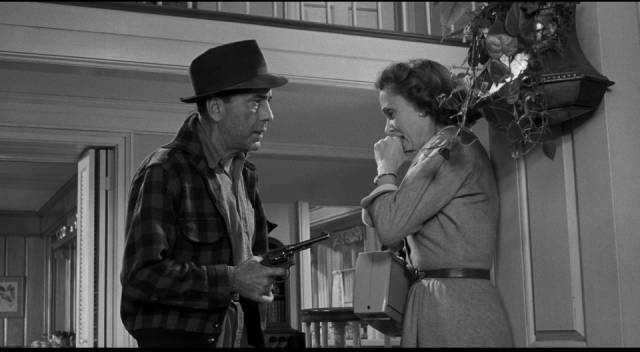
Indicator’s new Universal Noir 2 box set is a disappointing follow-up to their previous noir sets – five focused on movies from Columbia, plus last year’s first Universal set. This isn’t to say that all of the movies in the set are without interest, but it is a rather more than usually random collection, most of which barely if at all qualify as noir even if you apply the term very loosely. (One of the movies is included in the first edition of the Film Noir Encyclopedia, but dropped from the revised, expanded second edition, while another which is absent from the first edition shows up in the second – indicating just how slippery the classification is.)
My creeping sense of disappointment was triggered by the first film in the set, and only increased as my desire for a noir fix was thwarted by family melodramas, social issues and heavy-handed moral dilemmas rather than nihilistic crime narratives. My reaction arises from an overall sense of unfulfilled expectations rather than the intrinsic qualities of the films themselves, though most of them don’t stand out from the usual run of studio product turned out quickly to fill release schedules.
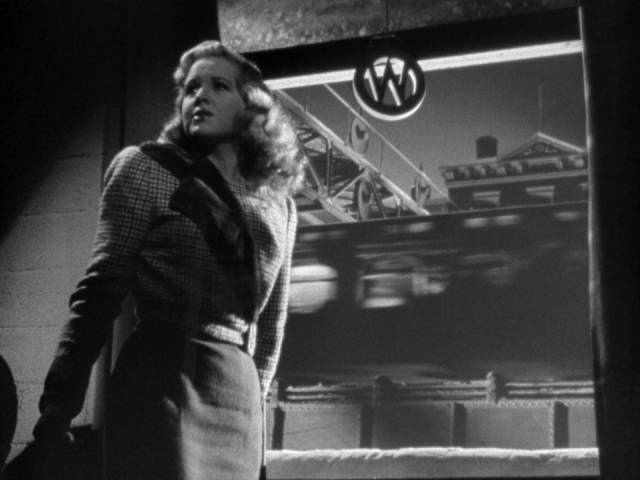
Lady on a Train (Charles David, 1945)
The first, and most annoying, is Lady on a Train (1945), the first of two features directed by Charles David, whose most notable credit is production manager on Marcel Carné’s Drôle de drame (1937), before leaving France to work with the Kordas in England, then emigrating to the States and a stint in Hollywood. The set-up of his feature debut promises a familiar story which could support a taut, suspenseful noir mystery – a young woman arriving by train in New York at night witnesses an apparent murder in an office beside the track, but only sees the killer’s back; the next day she sees the victim’s picture in the paper, a wealthy industrialist who has supposedly died at home from a heart attack; so she sets out to investigate a murder which nobody believes ever happened – but it’s played for comedy in a vehicle designed to help teen musical-comedy star Deanna Durbin transition to more adult roles (she was twenty-three at the time).
With the material tailored for this purpose, any genuine mystery and suspense doesn’t stand a chance, while the attempts at comedy rooted in the heroine’s naivete and brash confidence (drawn from her appetite for lurid mystery novels) are strained, quickly becoming tedious and irritating. Durbin is supported by an excellent cast of character actors – Ralph Bellamy, Dan Duryea, George Coulouris, Edward Everett Horton – but they’re all there to prop up the young star rather than give real texture to the story.
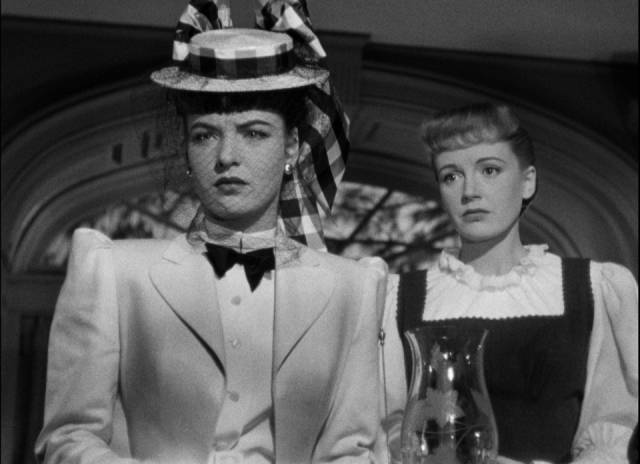
Time Out of Mind (Robert Siodmak,1947)
Having struggled through this, my hopes that the set would gather steam were quickly dashed by Time Out of Mind (1947). Although directed by Robert Siodmak in the middle of his run of classic noirs, it’s a period drama of dysfunctional family and thwarted ambition. The big problem is an unsympathetic protagonist, but the weird dynamics of his relationships with his sister and the daughter of the family’s housekeeper manage to maintain a degree of interest.
Christopher Fortune (Robert Hutton) is the son of a wealthy shipping magnate in late 19th Century New England, but he hates the sea and has a passion for music. Captain Fortune (Leo G. Carroll) insists that he must go into the business and treats his musical ambitions with contempt. So his devoted sister Clarissa (Ella Raines) and the adoring Kate (Phyllis Calvert), who has grown up with him and obviously has deep romantic feelings, both conspire to get him away so that he can study music in Paris. Kate hopes that they will be together when he returns, but her dreams are dashed when he comes home with his bride, Dora (Helena Carter), a vacuous society girl who clings to the idea that he’ll be a successful celebrity composer – a prospect propped up by her father’s money; a concert hall is rented, an orchestra hired, and Christopher’s composition debuts to critical contempt.
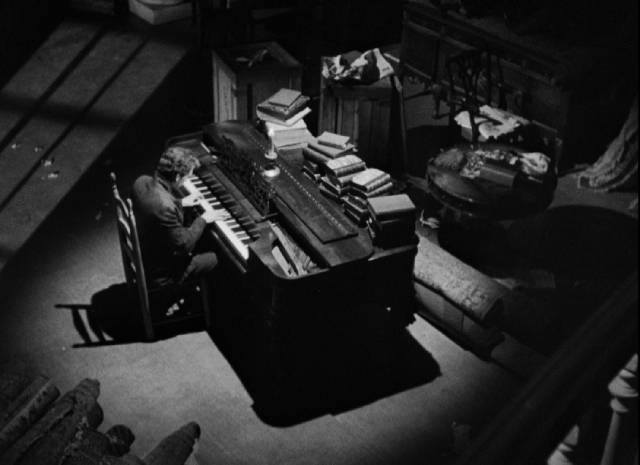
Away from Kate and Clarissa, he has lost his way and squandered his talent; back home he sinks into self pity and becomes an alcoholic. Only the love of a good woman can save him and Kate believes she’s just the person for the job. In familiar “woman’s picture” style, the narrative revolves around a strong woman’s masochistic self-sacrifice in service of an unworthy man. Siodmak and cinematographer Maury Gertsman give the proceedings some visual atmosphere and Phyllis Calvert and Ella Raines dominate with performances which suggest unspoken (and given the Code, unspeakable) undertones – there’s more than a hint of incestuous desire in Clarissa’s devotion to Christopher, and did Kate have to make some personal sacrifice to persuade handyman Jake (Eddie Albert) to lend Christopher the money for his flight to Paris? But all this effort can’t overcome the creakiness of the melodrama.
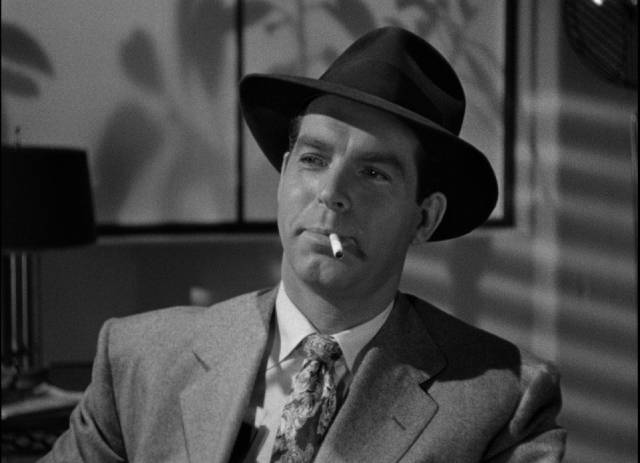
Singapore (John Brahm, 1947)
John Brahm’s Singapore (1947) is the closest the set comes to genuine noir, though it also owes a lot to Casablanca (1942) and other movies dealing with adventurers whose lives were disrupted by the war, like Stuart Heisler’s Tokyo Joe (1949). Fred MacMurray is smuggler Matt Gordon who, before the war, spars with Deputy Commissioner Hewitt (Richard Haydn) over a stash of illicit pearls. In the days before the Japanese invade the colony, Matt meets and falls for Linda Grahame (Ava Gardner). When the attack comes, he fails to get either Linda or the pearls out – the latter are stashed in his hotel room; the latter seems to die in an air raid.
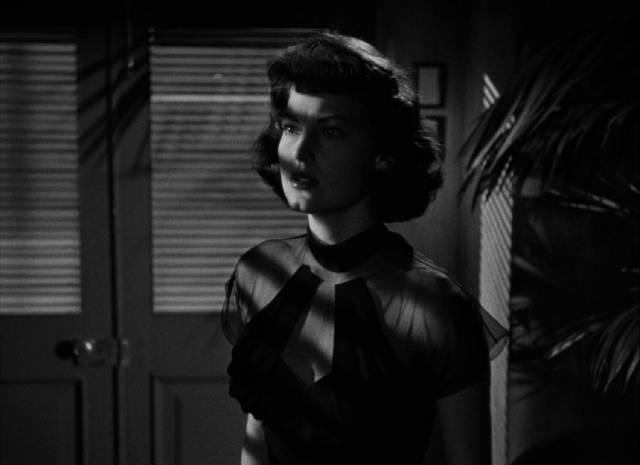
After the war, Matt returns in order to retrieve the pearls, again butting heads with Hewitt and under observation by the shady Mr. Mauribus (Thomas Gomez), who wants the pearls. Matt is surprised to run into Linda, who doesn’t seem to know him. She’s now married to plantation owner Michael Van Leyden (Roland Culver) and has no memory of her life before the air raid. Yes, Matt has to deal with that noir staple, amnesia, as he tries to retrieve the pearls and regain Linda’s affection, all while being watched by Hewitt and pursued by Mauribus’s henchmen.
Singapore is a fairly by-the-numbers B-movie which lacks the wit of Casablanca, though the fine cast keeps it lively enough – MacMurray could handle this kind of material in his sleep and he’s ably supported by Culver, Haydn, Gomez and the likes of Spring Byington, Holmes Herbert, Porter Hall and Philip Ahn in minor roles, while Gardner adds glamour just a year after making her mark in Robert Siodmak’s The Killers (1946).
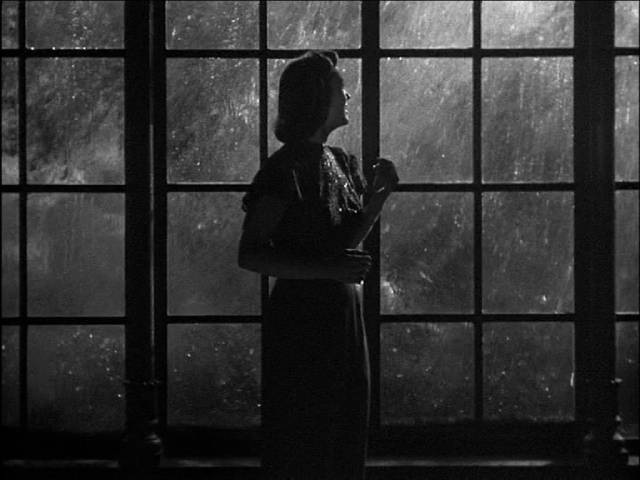
A Woman’s Vengeance (Zoltan Korda, 1948)
A Woman’s Vengeance (1948) is a psychological mystery closer to something like Rebecca (1940) than noir. Adapted by Aldous Huxley from one of his own stories and directed by Zoltan Korda, it has a sombre tone and the atmosphere of an English country house mystery. It also has an unsympathetic protagonist in Henry Maurier (Charles Boyer), a philandering husband whose wealthy wife Emily (Rachel Kempson) is an invalid cared for by live-in busybody nurse Caroline Braddock (Mildred Natwick). He’s oblivious of the feelings of his neighbour Janet Spence (Jessica Tandy), who rather hopes that she’ll be able to step in when Emily is out of the way. However, after Emily dies of an apparent heart attack, Henry quickly marries his much younger mistress, Doris Mead (Ann Blyth).
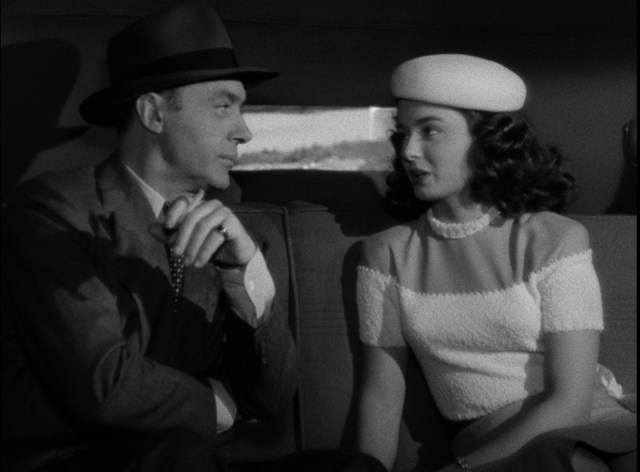
The arrival of Doris triggers multiple resentments and before long rumours spread that Emily’s death was not natural after all and the body is exhumed for an autopsy which reveals the presence of a fatal dose of poison. A web of circumstantial evidence and testimony clearly points to Henry and he’s duly tried, convicted and sentenced to hang. Only family doctor James Libbard (Cedric Hardwicke) suspects the truth – well, the doctor and the audience who no doubt noticed the film’s giveaway title. As the minutes tick away towards the fateful hour, the doctor works on Janet, a hysterical spinster infuriated that she didn’t get what she wanted from her act of murder, eventually getting the confession he needs to justify calling the prison and demanding cancellation of the execution.
With Henry an unsympathetic opportunist, it’s hard to care much about his fate, something which the film itself seems to be well aware of; the entire final stretch is given over to the subtle cat-and-mouse contest between Dr. Libbard and Janet, with Hardwicke and Tandy providing the most interesting performances among a generally fine cast.
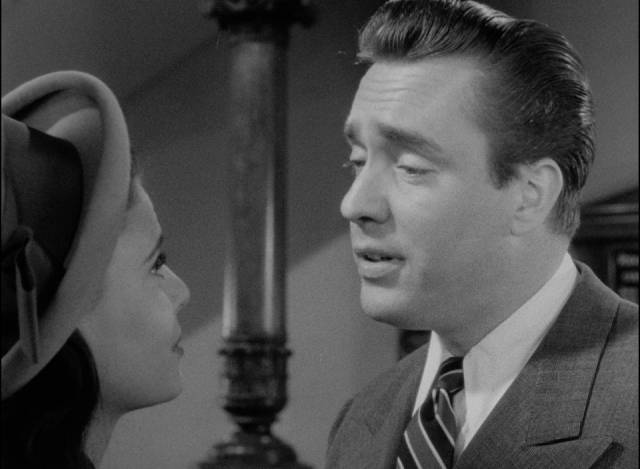
An Act of Murder (Michael Gordon, 1948)
Michael Gordon’s An Act of Murder (1948) also centres on a marriage in which the wife is an invalid and the husband rather unsympathetic – though here there’s a loving relationship and his unpleasantness revolves around his professional life. Calvin Cooke (Fredric March) is a judge who likes nothing better than the bring down the full weight of the law on transgressors. He brooks no mitigating excuses and happily sentences pathetic characters to death. His daughter Ellie (Geraldine Brooks) is involved with lawyer David Douglas (Edmond O’Brien), who believes that justice needs to be tempered with empathy.
Cooke’s wife Catherine (Florence Eldridge) has been having serious headaches and finally agrees to see the family’s doctor, Walter Morrison (Stanley Ridges), who does tests and consults with specialists. The doctor doesn’t tell Catherine what he’s found, but lets Cooke know that she has a brain tumour and will be dead in months at the most. They agree to keep it from her so she “won’t worry”; as her condition deteriorates, Cooke keeps reassuring her that there’s nothing wrong – his paternalism becomes insufferable and reaches a climax when he can no longer stand to see her suffering and decides she’ll be better off dead. Driving on a country road at night, he crashes the car and she does indeed die.
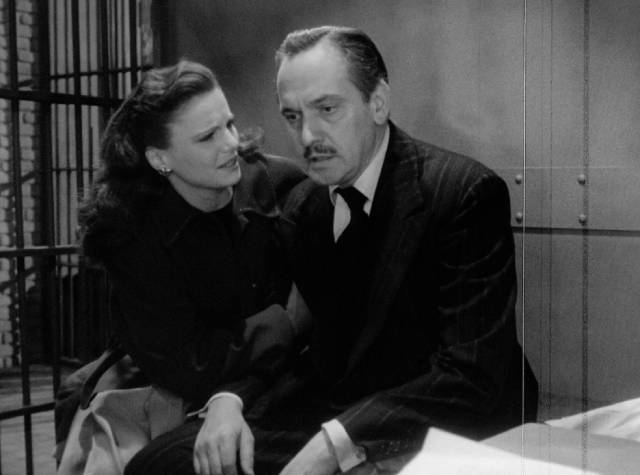
Unwilling to be any more lenient with himself than he’s been with any criminal brought before him, he confesses to murder and demands to be tried. Against his wishes, Douglas is assigned to defend him, pleading extenuating circumstances – the court is faced with the prickly problem of euthanasia, an illegal act but one committed with the best intentions towards the victim. But in the end it all comes to nothing because it seems that Catherine was already dead at the time of the crash, having succumbed to her illness. So all that’s left is Cooke’s intention – yes, he had decided to kill her, but he didn’t actually do it. Acquitted, he has a new understanding that guilt and responsibility are far more complicated than he’s ever allowed and, despite his recent actions, he hopes that he’ll be allowed to remain on the bench and in future dispense justice with compassion.
As a drama dealing with thorny moral issues, An Act of Murder manages to dodge its difficult questions and sidestep the implications of euthanasia with some clumsy sleight of hand.
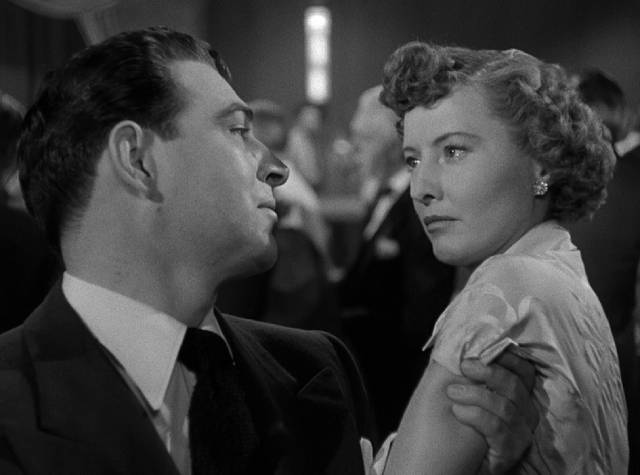
The Lady Gambles (Michael Gordon, 1949)
Michael Gordon followed it up immediately with The Lady Gambles (1949), another movie dealing with a social issue and connected to noir by the thinnest of threads. Joan Booth (Barbara Stanwyck) accompanies her reporter husband David (Robert Preston) to Las Vegas, where he has an assignment. While he works, she diverts herself in the casinos, very quickly falling under the spell of gambling. She wins a bit, she loses more; she steals David’s expense money, but manages to win enough to replace it before he finds out. She also attracts the attention of casino manager Horace Corrigan (Stephen McNally), who recognizes an addict when he sees one.
Joan disappears, spiralling downward into sleazier and sleazier venues; by the time she’s rolling dice in back alleys with winos, she barely knows herself who she is. David discovers her in jail and pleads for help rather than punishment. What the film skirts is how she’s survived her time underground what she might have done for Corrigan to persuade him to continue enabling her addiction and later what she might have done in the dive bars and alleys where she continues to gamble and cheat her way to a temporary fix.
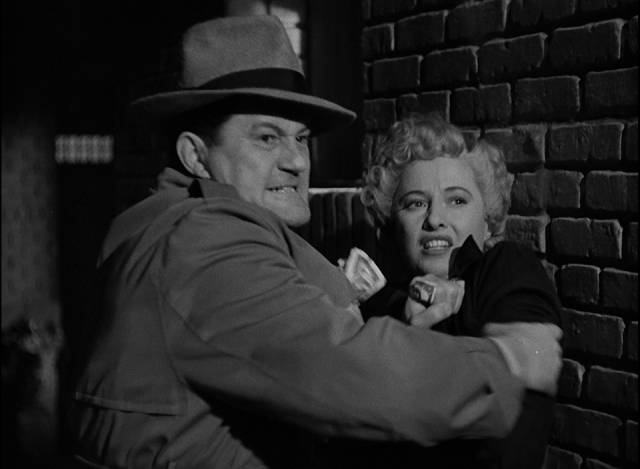
The Lady Gambles is essentially a gamblers’ equivalent to The Lost Weekend, a call for society to recognize addiction as a disease rather than a moral failing. It has the bluntness of a tract rather than the depth of drama and is most notable for the quality of the cast. This was made immediately after Sorry, Wrong Number (1948), for which Stanwyck had received her fourth Oscar nomination, and just before The File on Thelma Jordon (1949), the last of Robert Siodmak’s major noirs, and seems like a minor diversion in a career in full swing – the next year, Stanwyck would star in Anthony Mann’s western masterpiece The Furies (1950).
While these movies in themselves are only of minor interest, Indicator have done their usual excellent job with fine visual presentations – all of them have received recent scans in 2K or 4K – and as always there are plenty of supplements, with a commentary for each feature, wartime documentary shorts, interviews and visual essays on some of key people involved in the productions, several radio plays, and a long promotional film by John Brahm celebrating the hundredth anniversary of the Miller Brewing Company.
*
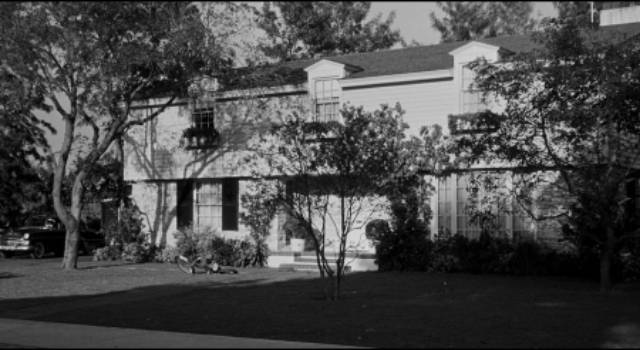
The Desperate Hours (William Wyler, 1955)
Given that the six movies in the Indicator set are all relatively minor, despite the stature of some of the cast members and directors, it’s probably unfair to make such comparisons, but none of them are in the same league as the domestic noir of William Wyler’s The Desperate Hours (1954), which I just watched for the first time in many years in a gorgeous restoration from Arrow (scanned in 6K from the original VistaVision negative).
Wyler had a long career, accumulating numerous awards between his start making shorts in 1925 and his final film, The Liberation of L.B. Jones (1970), a controversial melodrama about racism. Lauded by Hollywood, often profitable at the box office, his films posed a thorny problem for adherents to the auteur theory; a master craftsman whose work was as recognizable on screen as Hitchcock’s or Ford’s, he revealed no thematic obsessions which ran consistently through one film to another – other, perhaps, than a concern with decency and the effort to behave well within the social constraints in which his characters find themselves.
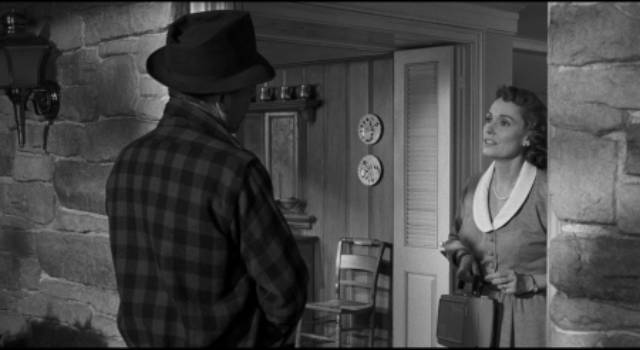
Nominated for Best Director Oscars twelve times (a record), he won three – for Mrs Miniver (1942), a cloying slice of home front uplift; The Best Years of Our Lives (1946), his superb treatment of the war trauma of soldiers returning to a society which would rather not know what they had lived through; and Ben-Hur (1960), a huge, ponderous Biblical epic. While there’s no discernible connection between these movies, what they do share is an air of middle-brow good taste. There’s a scrupulous attention to social details and character psychology, but Wyler almost always maintained a certain distance, a cool perspective rather than intimate engagement with the material. It was this, and the techniques he used to convey the material, which makes his work so identifiable.
He was a master of mise-en-scène, making use of architectural space and composing his images in depth, to evoke psychological tension and the complex ways in which the characters connect with one another and their surroundings. There’s an undeniably theatrical quality, with the camera creating a kind of mobile proscenium and the blocking of the actors offering multiple points of potential focus within the scene, inviting the audience to become active participants in the creation of meaning within the drama. Wyler seems to withhold directorial opinion in favour of allowing his audience to come to their own judgments.
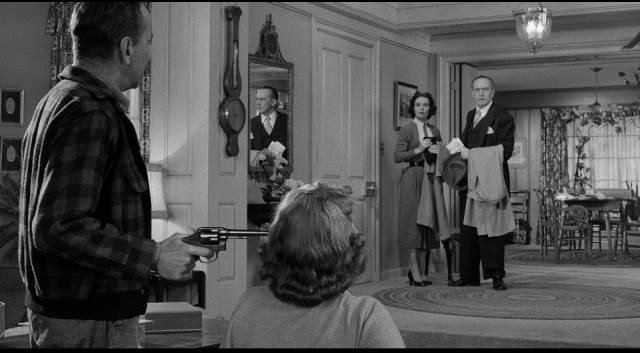
What is perhaps most fascinating about his work is that he was able to bring this technique to bear on such a wide variety of material. He could go from the Depression era New York slums of Dead End (1937) to the pre-Civil War South of Jezebel (1938), the windswept 19th Century moors of Wuthering Heights (1939) and the tropical plantation of The Letter (1940), immersing himself in all these various times and places with equal ease. This chameleon-like quality made him the perfect studio director and he maintained an impressive pace throughout the ’40s and ’50s, faltering in the ’60s as the power of the studios declined and his approach to filmmaking began to slip out of sync with the times. After Ben-Hur, he made only five movies in the following decade, an odd selection beginning with The Children’s Hour (1961), adapted from Lillian Hellman’s play about a lesbian scandal at a girls’ school; followed by The Collector (1965), from John Fowles’ literary thriller; then the lightweight romantic fluff of How to Steal a Million (1966) and the old-fashioned musical Funny Girl (1968), before that final bitter melodrama The Liberation of L.B. Jones.
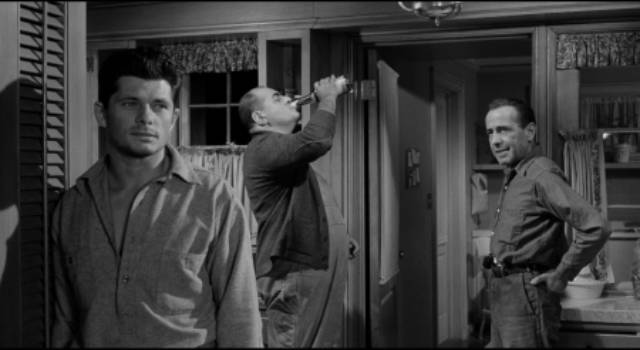
In the ’50s, Wyler made an impressive string of literary and theatrical adaptations, from his greatest film The Heiress (1949) through to Ben-Hur, in the middle of which was The Desperate Hours (1955), adapted by Joseph Hayes from his own novel and play. The presence of Humphrey Bogart (in his penultimate performance) provides a link to an earlier era of gangster movies, though notably stripped of any trace of romanticism; his Glenn Griffin is a dangerous sociopath whose one (barely) redeemable quality is a desire to protect his younger brother Hal (Dewey Martin), a desire which paradoxically leads to Hal’s destruction because Glenn is incapable of making a sensible decision.
These two brothers, along with the mentally-challenged Sam Kobish (Robert Middleton), having escaped from prison, force their way into a middle-class suburban home – chosen based on a child’s bike lying on the front lawn – and take the family hostage while they wait for Glenn’s girl to arrive with money for their getaway. As the situation drags on for several days, tensions grow between the criminals – Hal sees in the middle class home a life completely different from the one Glenn has condemned him to; Kobish chafes at Glenn’s efforts to control his crude impulses (which include sexually menacing daughter Cindy [Mary Murphy]) – while the members of the Hilliard family seek ways both to placate the criminals and to escape.
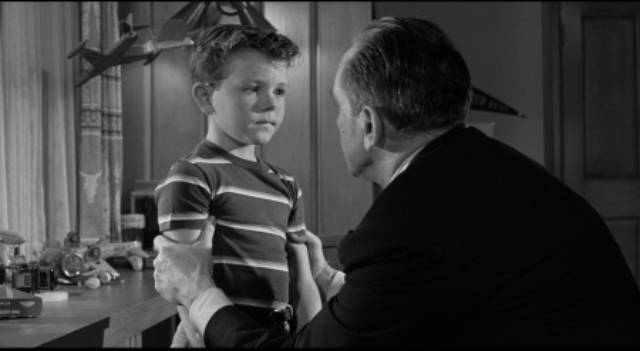
The situation and the various conflicts are actually quite conventional, and in fact Glenn and his companions, while continually threatening, don’t actually harm the family – the only casualty in the film is an unfortunate old man who picks up the garbage and inadvertently realizes what’s going on, prompting Glenn to send Kobish after him; he’s murdered at the side of a lonely country road. And yet Wyler manages to build steadily escalating suspense through the performances and his staging of the action, which mostly takes place on the single two-level set of the family’s home which features a prominent open staircase. The symbolic value of the latter has long been used in movies to delineate social and psychological divisions, the divide between public and private, between what is open and what is secret; here the intruders take full possession of the downstairs, while the family increasingly retreat to the more intimate spaces upstairs.
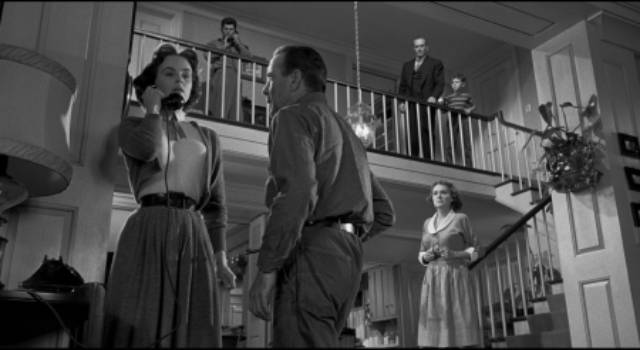
The core tension between the family’s assumption of security and the sudden intrusion of external chaos is a conventional trope, with the civilized members of the family gradually coming to the realization that they may have to take on some of their opponents’ less civilized characteristics in order to survive (this is the essence of all home invasion and siege narratives such as Larry Peerce’s The Incident [1967] and Sam Peckinpah’s Straw Dogs [1971]). But The Desperate Hours was made at a particular time in which issues of security and internal threats consumed public discourse – for years, the Right had been hammering at the idea that America was under threat from within, that there was in fact no genuine security. There’s an interesting comparison to be made between this and Rudolph Maté’s The Dark Past (1948), which has a very similar structure, but focuses on individual psychology rather than the (implied) Commie threat; when a psychologist’s family is taken hostage by a violent criminal, the middle-class academic analyzes the intruder into impotence, while in Wyler’s movie Hilliard tricks Glenn into realizing that he’s actually powerless to harm the family. But in both cases it’s the inherent strength of the individual family patriarch which defeats the forces of violent chaos, with representatives of the state stepping in to mop up only after the danger has already been defused by Dad.
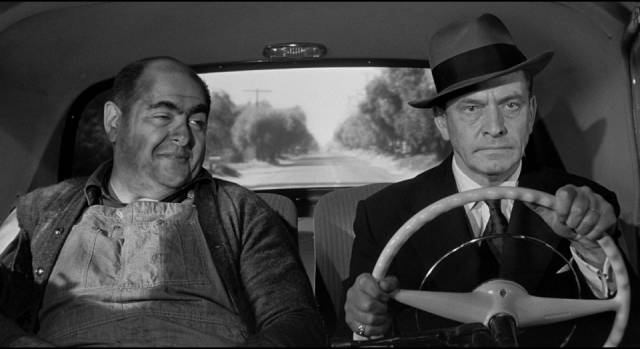
The most interesting aspect of the movie is the third element in the situation, the forces of law which are tracking the escaped convicts and gradually closing in on the quiet suburban neighbourhood where the domestic drama is unfolding. Led by bitter Deputy Sheriff Jesse Bard (Arthur Kennedy), who bears a facial scar from a previous encounter with Glenn, the local cops and the feds are only concerned with recapturing or, even better, killing the trio and show little interest in protecting the family. Daniel Hilliard (Fredric March) is faced with finding a way to hold off the cops while trying to save his wife Ellie (Martha Scott), daughter Cindy and young son Ralph (Richard Eyer). The suggestion – not overtly stated – is that the authorities are perfectly willing to sacrifice ordinary citizens in order to root out the enemy, that the Red baiting hysteria of the McCarthy/HUAC years was more likely to destroy the country than save it. Only individual action by committed citizens could ensure security.
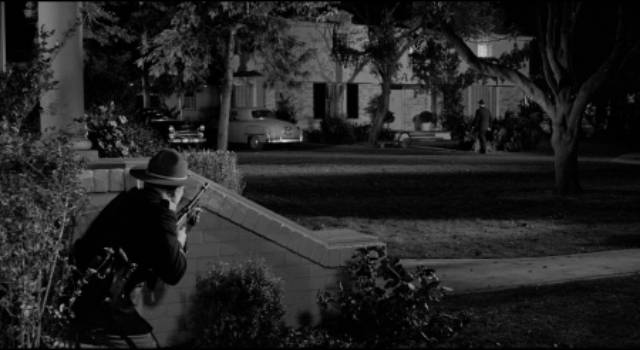
Not that the film has any particular thematic depth – the ending, with the destruction of the threat and the rather too-easy restoration of order, is a pat affirmation of middle-class strength and resilience in the face of traumatic events. But Wyler’s mastery of mise-en-scène infuses the material with dramatic force, making it an excellent thriller which explores shadings of masculinity (Glenn vs Hilliard, Glenn vs Hal, with Hilliard trying to set a standard for his son Ralph) within the fraught context of Cold War uncertainties about the national identity. The director displays again his ability to handle with consummate skill any material which came his way.
The film looks excellent on Arrow’s disk and comes with a number of appreciative extras – a Daniel Kremer commentary, an interview with film professor Jose Arroyo, a visual essay on Bogart by film curator Eloise Ross and a brief audio interview with Catherine Wyler, the filmmaker’s daughter.
Comments